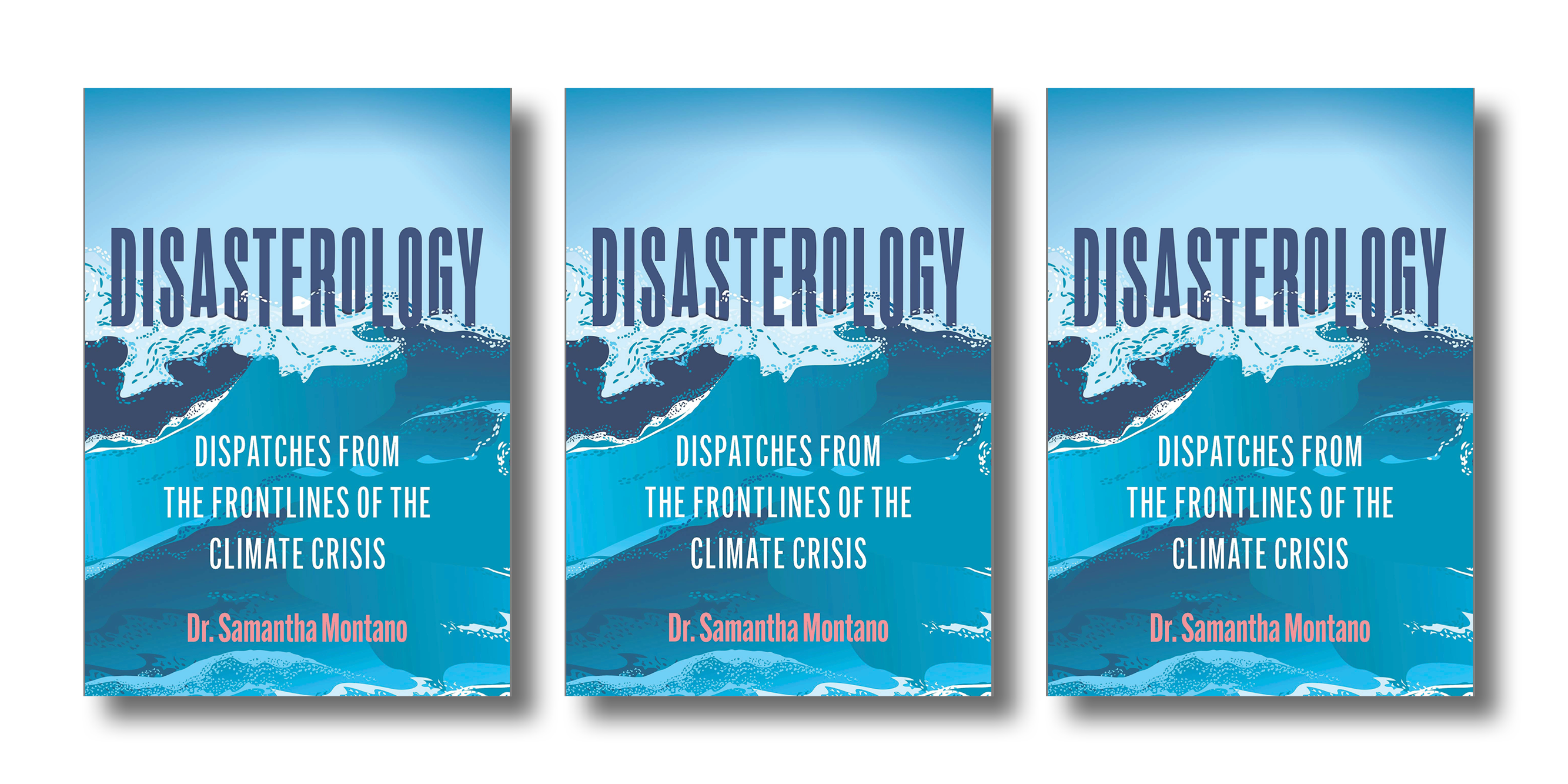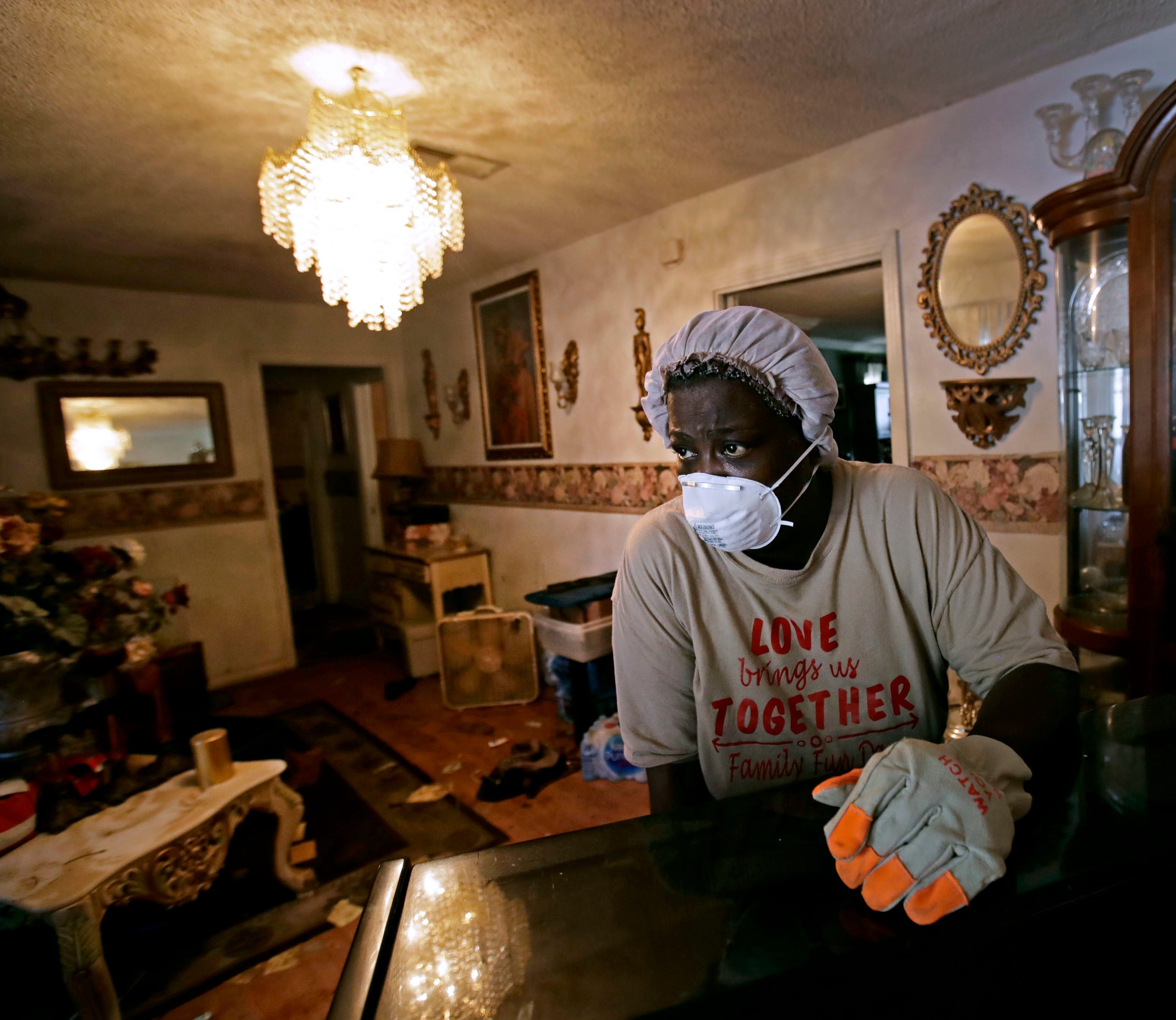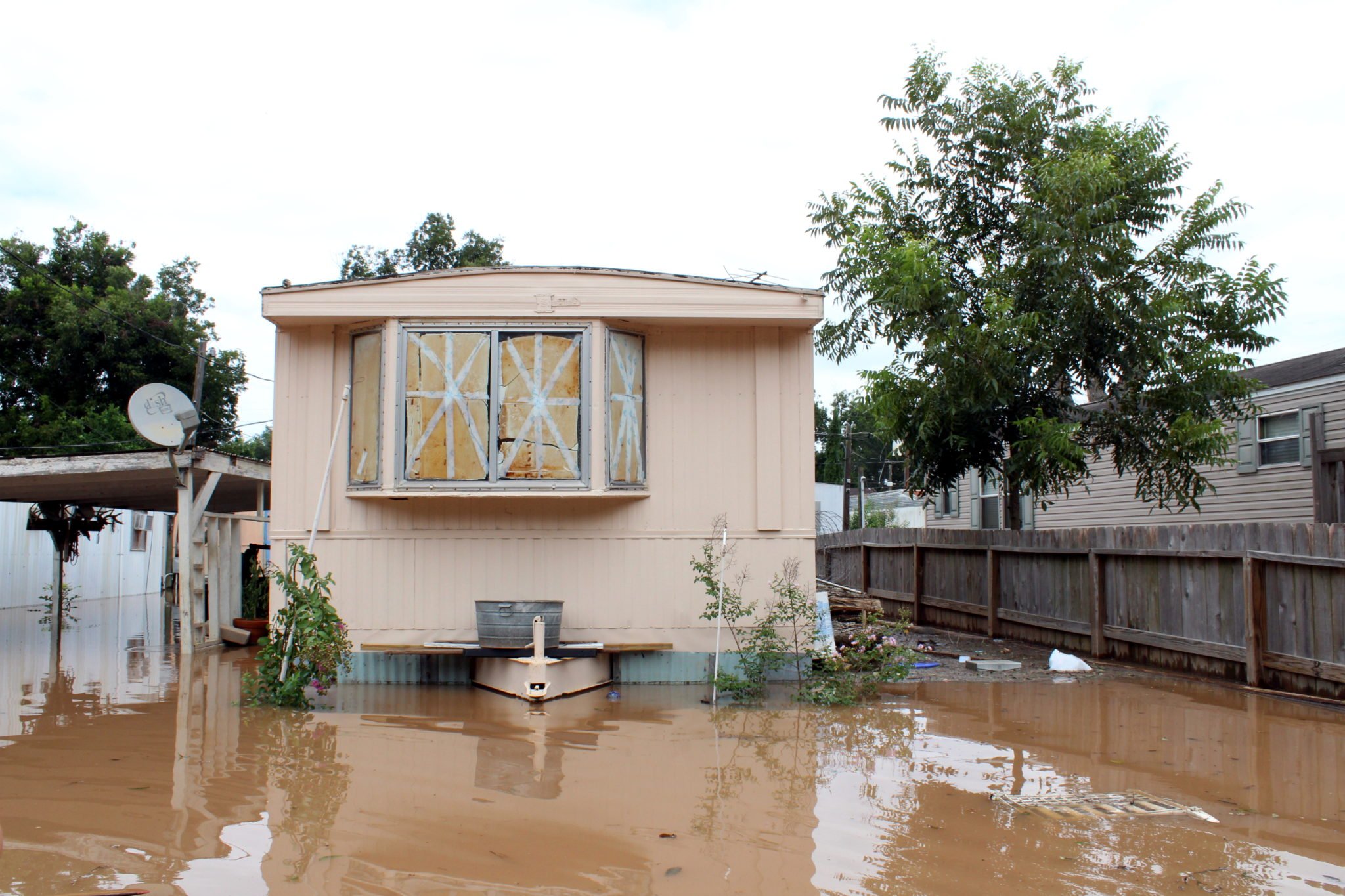Sunk Costs
Back-to-back record flooding along the Brazos River has forced people in Richmond to make an excruciating choice: Stay or go?
by Rose Cahalan
December 4, 2017
Just before sunset on a Friday in October, Richmond’s historic downtown is lively. Four women sit around a patio table at Joseph’s Coffee and Cigars, sipping lattes and pushing a stroller back and forth to calm a fussy baby. Guitar feedback seeps out from the open door of the Lone Star Saloon as a band warms up for their set, and a well-dressed young couple — he’s in cowboy boots and faded jeans, she’s got heels and a burgundy dress — poses for engagement photos in front of a red brick wall. It’s an idyllic small-town scene, down to the neatly kept lawns and families strolling the sidewalk.
But drive less than a half mile away, turn left off Alternate Highway 90 onto Riveredge Drive, and things start to look different. The first sign is the dried, cracked mud that still coats the road as it slopes down toward the banks of the Brazos River. Then there’s the debris: rotten furniture, broken wood and Sheetrock, tufts of pink insulation and miscellaneous belongings of all kinds, piled in front of almost every home in the Edgewood Trailer Park. On top of an upside-down sofa — its original color undetectable under a layer of mud — sits a children’s toy grocery cart, three bulging trash bags and a stack of romance novels. Several of the 50 or so trailers have red tags hanging from their front doors, marking them as unsafe to enter.
Edgewood flooded gradually in the days after Hurricane Harvey made landfall on August 25, as the Brazos bloated with more than 30 inches of rain. Residents watched calmly from lawn chairs as the water crept up inch by inch, swamping their homes in a slow-motion disaster. The same thing happened up and down the Brazos’ winding course toward the Gulf — not just in Richmond, but also in nearby Rosenberg, Simonton, Rosharon and Sugar Land. At least 7,000 homes and buildings flooded across Fort Bend County.
“It never crossed my mind that another flood would come again so soon.”
While life goes on as normal in the neighborhoods that escaped flooding, recovery in this part of Richmond is only beginning. Many people here had barely dried up from the previous record flood — in 2016. That year, the Brazos crested at 54 feet; Harvey topped that with 55 feet of flooding. And there was another significant flood in 2015. Indeed, from May 2015 to June 2016, the river saw four of the 10 highest crests ever recorded in Richmond.
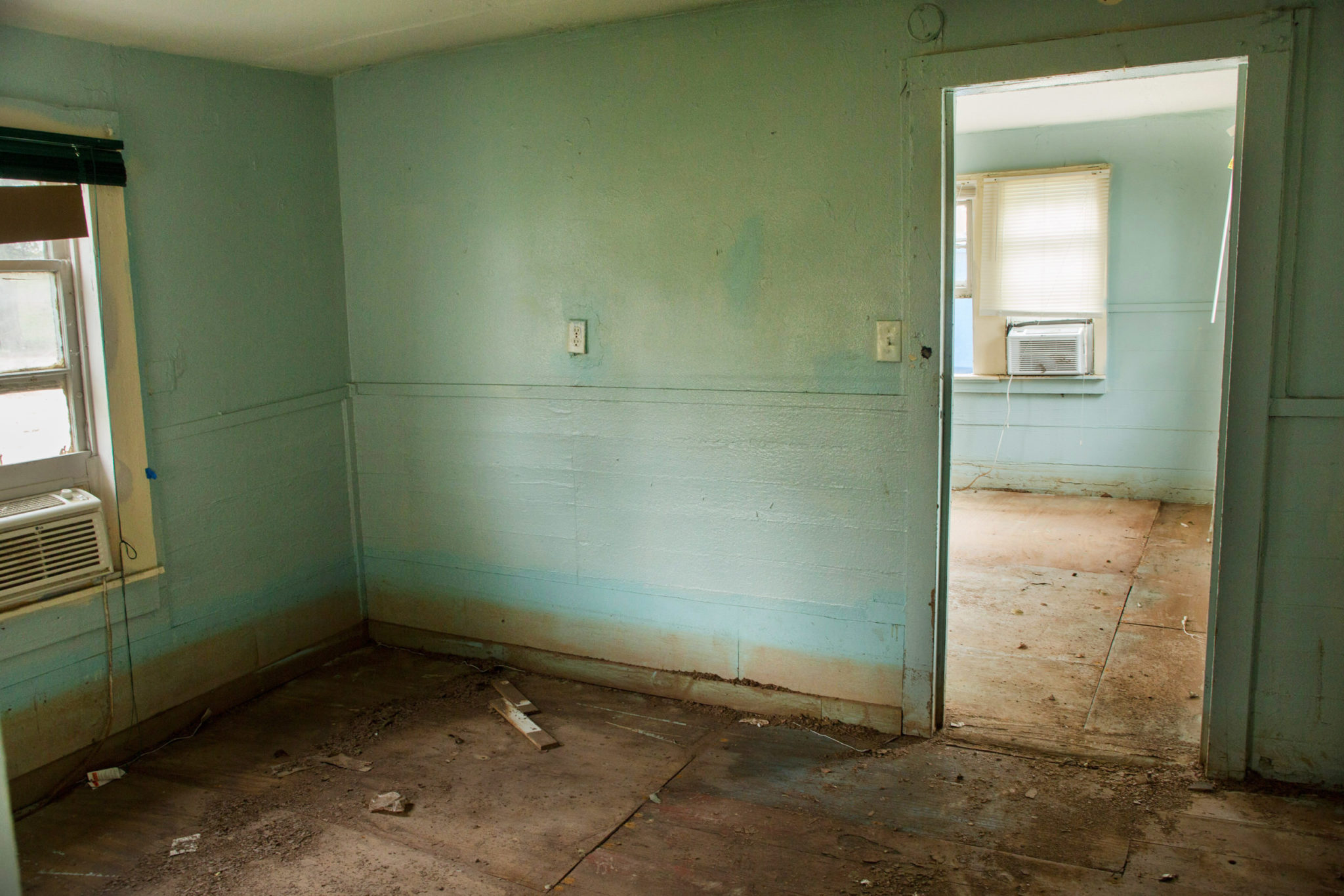
“We had just finished the repairs from last time,” says Irineo “Neo” Reyes as we walk through his gutted home. “We fixed it up with pretty new wood floors, new everything. It never crossed my mind that another flood would come again so soon.”
Reyes owns a barbershop and four of the park’s trailers, which he rented until they were ruined by the most recent flood. He and his wife, Maria, built their three-bedroom home themselves in 1950. Except for a two-year stint in the Korean War, he’s lived in Richmond all his 85 years, and he says this is the first time he’s considered leaving. “We don’t want to go, but we don’t want to go through this again, either,” he says. “We feel stuck.”
Texans across the path of Harvey’s devastation are feeling the same way. But as climate change makes extreme weather events more common, this town of 12,000 a half hour southwest of Houston may provide a distinct object lesson. The repeat extreme flooding in Richmond raises questions about how we collectively share risk — from buyouts to flood insurance to recovery costs — but at its most basic level, it’s about people facing an impossible calculus. In Richmond, those unlucky enough to have flooded twice must decide whether to move to higher ground and leave behind their close-knit community, or stay put and risk losing everything a third time.
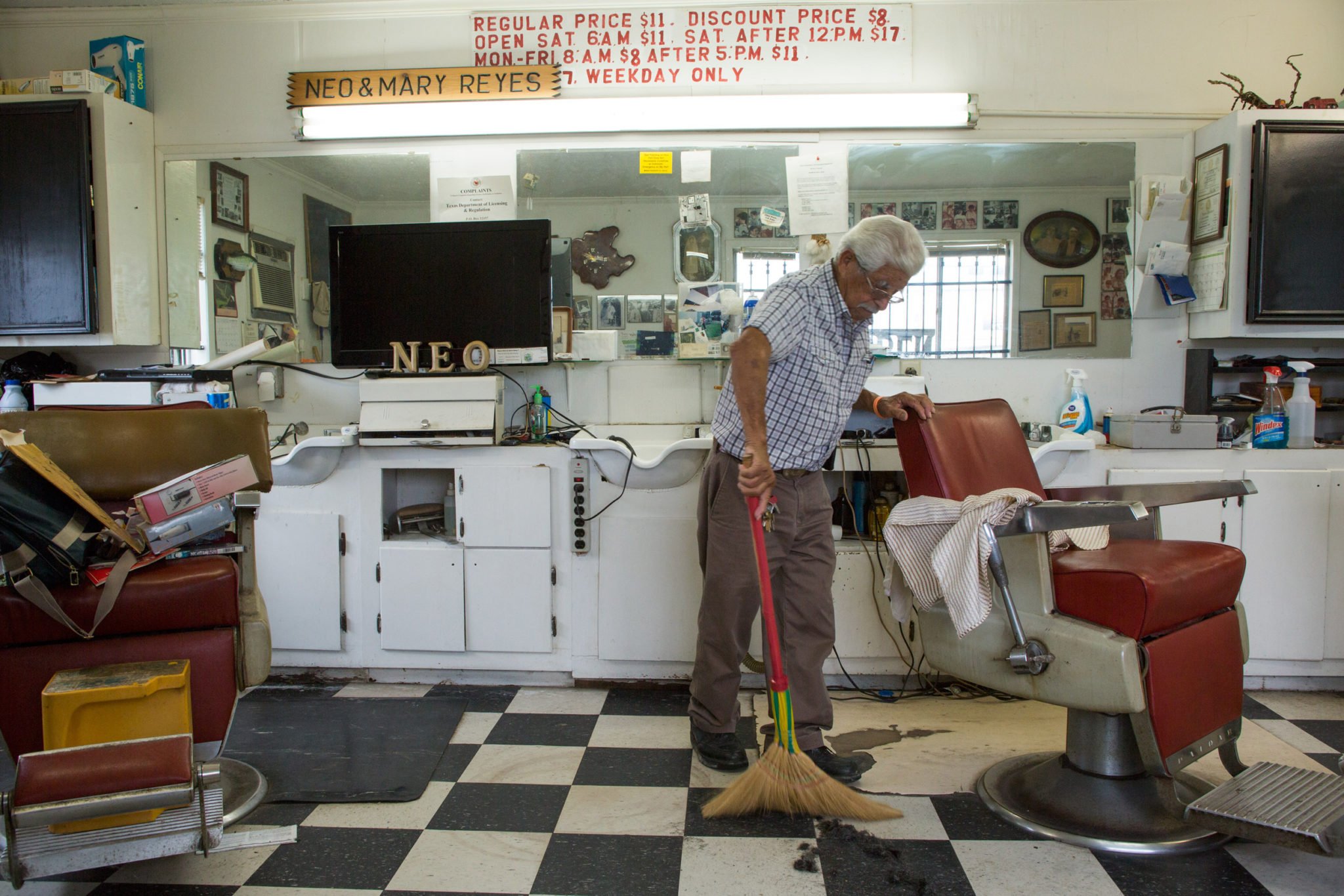
“Water lots available!” proclaims a cheerful sign at the entrance to the River’s Edge subdivision. A large fountain welcomes residents to this master-planned community, which was built in 2004 and has more than 600 homes. The developer’s website lists all the amenities that suburban dreams are made of, including a “playground, volleyball court, baseball and soccer fields, two lakes and 20.8 acres of Forested Nature Park with trails along the Brazos River.”
Those trails were part of what attracted Jessica and Linsey Calkins to the neighborhood three years ago. They moved from Cypress, another suburb whose rapid development was starting to feel “too built up,” Jessica explains. With its quaint downtown and small-town feel a short drive from central Houston, Richmond seemed like the best of both worlds. “We love the community,” Jessica says. “In our old neighborhood, people got out of their cars and went straight inside. Here, everybody knows everybody.”
It’s a 90-degree October afternoon, and we’re sitting on the Calkins’ lawn under the shade of a patio umbrella. Music drifts out the front door as contractors inside work on the house; today they’re installing a new thermostat and replastering pillars. Either Jessica or Linsey stops by every day to check on the progress — a routine that feels almost normal at this point, they say, since their house flooded in 2016 and again during Harvey. They were among 36 families whose homes flooded in their subdivision the first year; this year, 162 did.
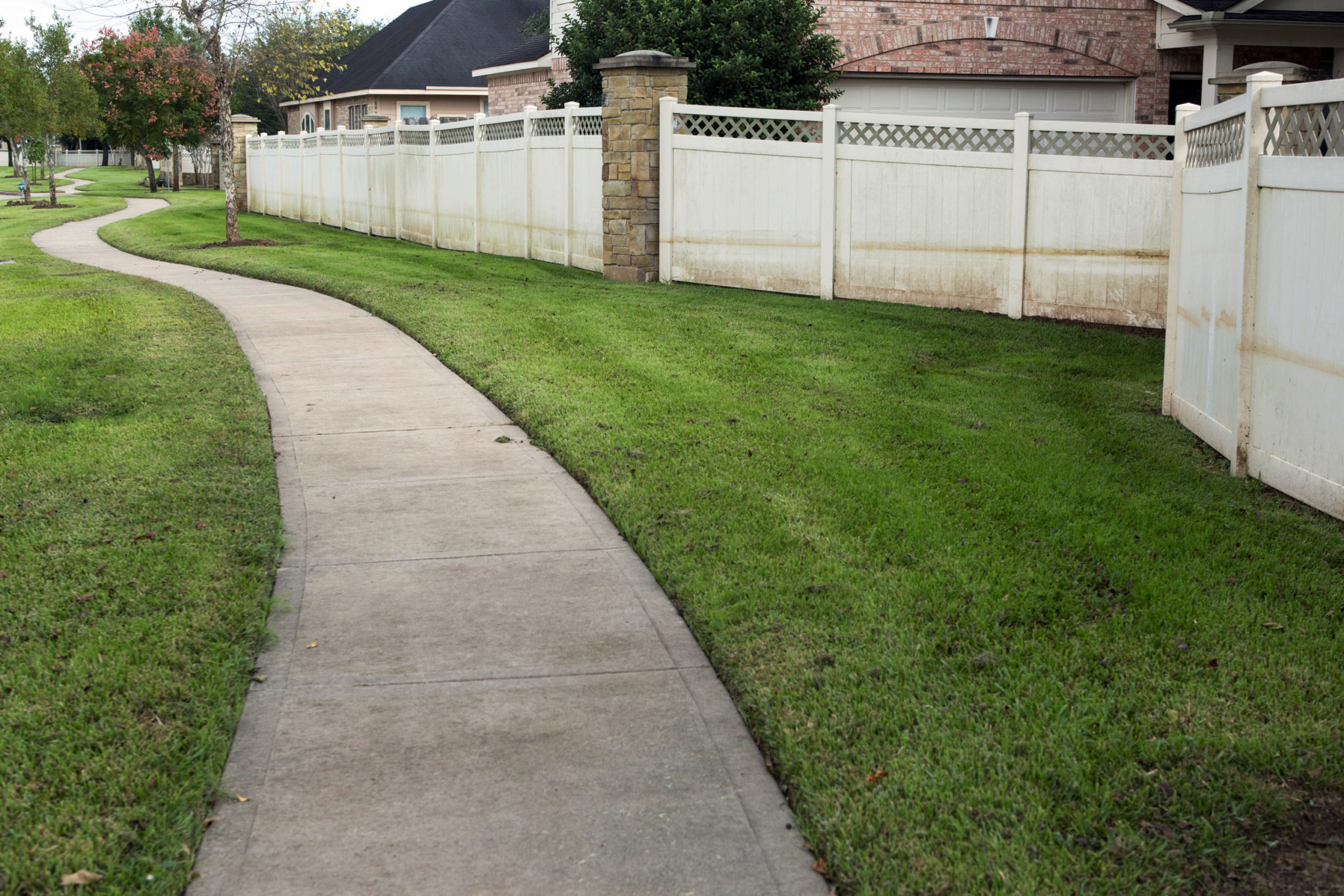
“It is what it is,” Linsey says, a refrain he’ll repeat throughout our conversation. “You do what you have to do.” This year, they felt like veterans. Linsey knew to put the blinds up high, since in the first flood they’d left them down only to have to spend several hundred dollars replacing them. Jessica remembered to save memorabilia first, since that was what she most regretted losing in the 2016 flood. “You know, the kids’ preschool artwork, their handprints of making a turkey or a snowman,” she recalls. “I didn’t get to that drawer in time.”
Van, 15, insisted on saving his Xbox, which has helped him stay sane for the month and a half that the family of four and their two cats have been living in a Best Western hotel room. It’s starting to feel a little cramped, the parents agree. “We try not to snap at each other, but we do,” Jessica says. I ask what’s been the hardest part, and Linsey’s answer surprises me: “Not having my kitchen.” Night after night of dinners out — which, unlike the hotel room, are not reimbursed by FEMA — has strained the family’s budget as well as their waistlines, he says, but mostly he misses cooking. He works as a pressman at a printer, though he’s always dreamed of being a chef. “Cooking is my stress relief,” he says, “and a way of having fun with the kids.” He sighs. “It is what it is.”
The Calkins have an emergency fund to draw on, and unlike the Reyes, they are among the roughly 17 percent of Harvey flood victims who have insurance to pay for most of the repairs. Still, they took a five-figure financial hit. And their credit score is still recovering from when they were late paying the mortgage in the chaos of the 2016 flood. “I can’t do another one,” Jessica says, meaning another flood. “I just can’t.”
Yet they didn’t consider moving. Partly, it’s a financial decision: They’ve owned the house only three years, so it’s too soon to recoup their investment. And Jessica, who works as a realtor, is betting their property value will eventually rebound. “This is what we’ve worked for for 30 years,” she says. “We turned a profit on our first house, and a better profit on the second house. So we feel invested.”
“It is what it is,” Linsey says, a refrain he’ll repeat throughout our conversation. “You do what you have to do.”
They’re looking into elevating the house or buying an AquaDam, an inflatable moat, but both of those options cost in the tens of thousands. Like most of the River’s Edge subdivision, their home is in the 100-year floodplain, meaning the chance of flooding is 1 percent each year. But flood maps are often wrong, and rising temperatures are making severe storms more common. Warmer ocean waters feed hurricanes; a hotter atmosphere can produce heavier rainfall. Houston has seen five 100-year floods since 2015, and the number of heavy downpours over the city has increased 167 percent since the 1950s.
“Trifecta, baby,” laughs Linsey when I ask what they would do in the event of a third flood. “We’re getting good at this!” But Jessica just shakes her head, her eyes brimming with tears.
Inside, she’s written Bible verses in red Sharpie on the stripped doorframes: a good-luck charm. “Bless this house,” says one. Next to it is “Trust in the Lord with all your heart.”
“That one’s from last year, and this one is from this year,” she says, pointing to each. “Hopefully there won’t be a next time.”
Part of what’s cemented their decision to stay, Jessica explains, is the sense of community that drew them to Richmond in the first place. Immediately after both floods, days before the Red Cross showed up, their neighbors organized an impromptu army of volunteers. Church groups showed up from across the state to help clear debris, cook meals and tear out Sheetrock. “The overwhelming feeling of generosity…” She trails off. “Maybe it’s hard to understand from the outside, but yes, it’s part of why we’re still here.”
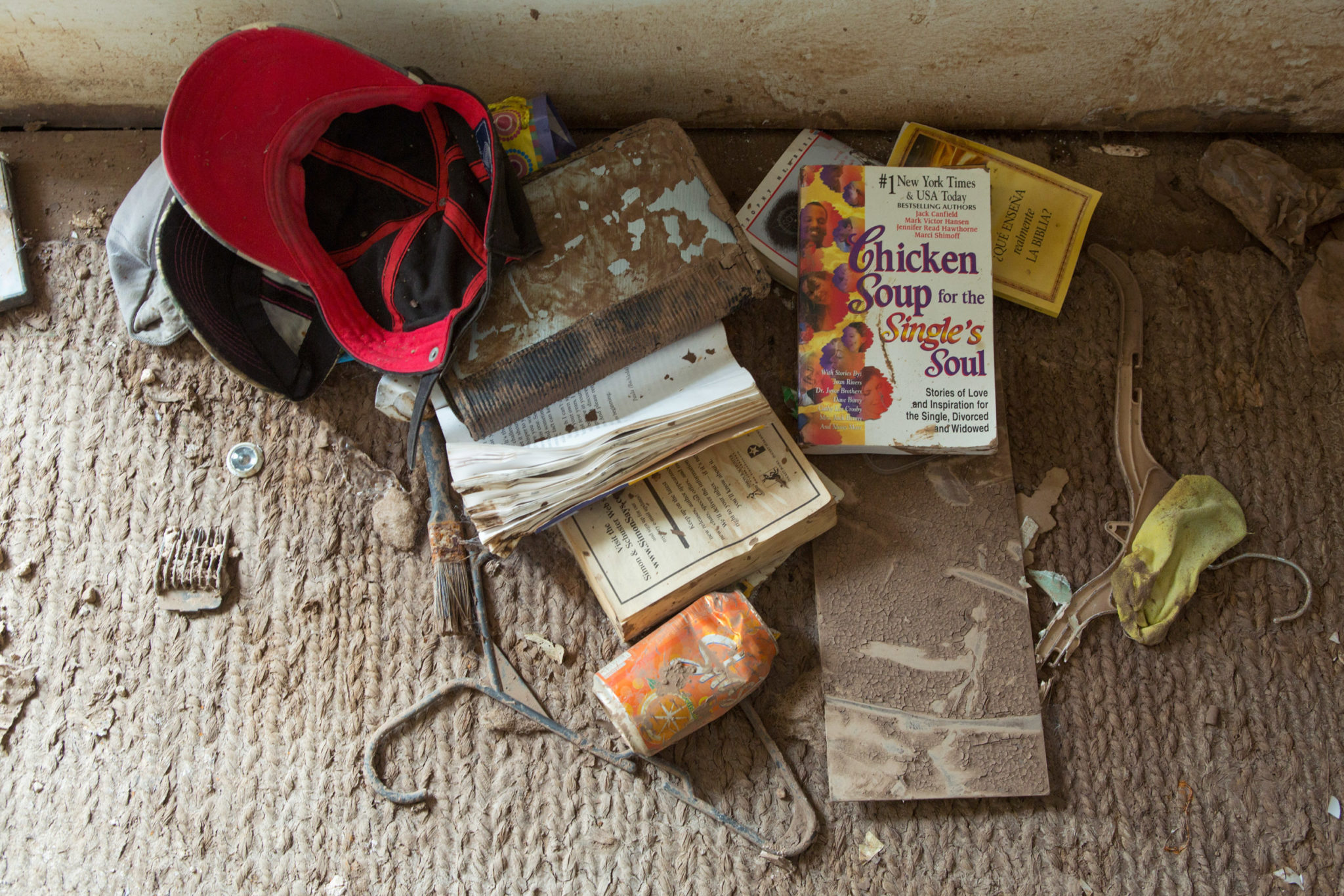
Wyatt Sebesta, who lives on Riveredge Drive about 2 miles from the Calkins, sees it differently. “Screw that, I’m done with this community,” he says. “They’re trying to push us out. It’s robbery, is what it is.”
We’re sitting on a couch in the trailer Sebesta, 34, is borrowing from a relative, directly across the street from his house. His great-grandfather bought the four-bedroom home in the early 1900s, he says, and it’s been in the family ever since. Like the other two-time flood victims I’ve met, Sebesta laments that the second flood came just as he was finishing repairs from the first: “I was 97 percent done,” he says. “All I had left was a little trim work and about this much flooring in the kitchen” — he holds his thumb and index finger a few inches apart — “and it would’ve been good as new.” He made the repairs almost entirely by himself, he says, while working 10-hour days as a construction superintendent. “I would get home around 7 or 8 at night, grab a beer, put my kneepads on and go to work,” Sebesta recalls. “Usually I worked until midnight or 1 a.m. Then sleep ’til 5:30, wake up, do it all again. I about worked myself to death.” Flood insurance covered only about $10,000 of the $60,000 estimate he received for the repairs, he says.
Since being laid off eight months ago, Sebesta now has ample time to work on repairs — and to rail against the city of Richmond and FEMA, which he believes are persecuting him. He leafs through two overstuffed manila folders of flood-related paperwork: letters from the fire marshal’s office, the permit office and the National Flood Insurance Program; FEMA floodplain maps and a Google Earth printout of the Ransom Road Levee, which was built in 2008. That levee was designed to mitigate flooding in nearby neighborhoods, the county jail and other previously unprotected areas, the Houston Chronicle reported at the time. Sebesta thinks it diverted floodwaters to his neighborhood. All 63 of the homes that flooded within Richmond’s city limits are on Riveredge Drive.
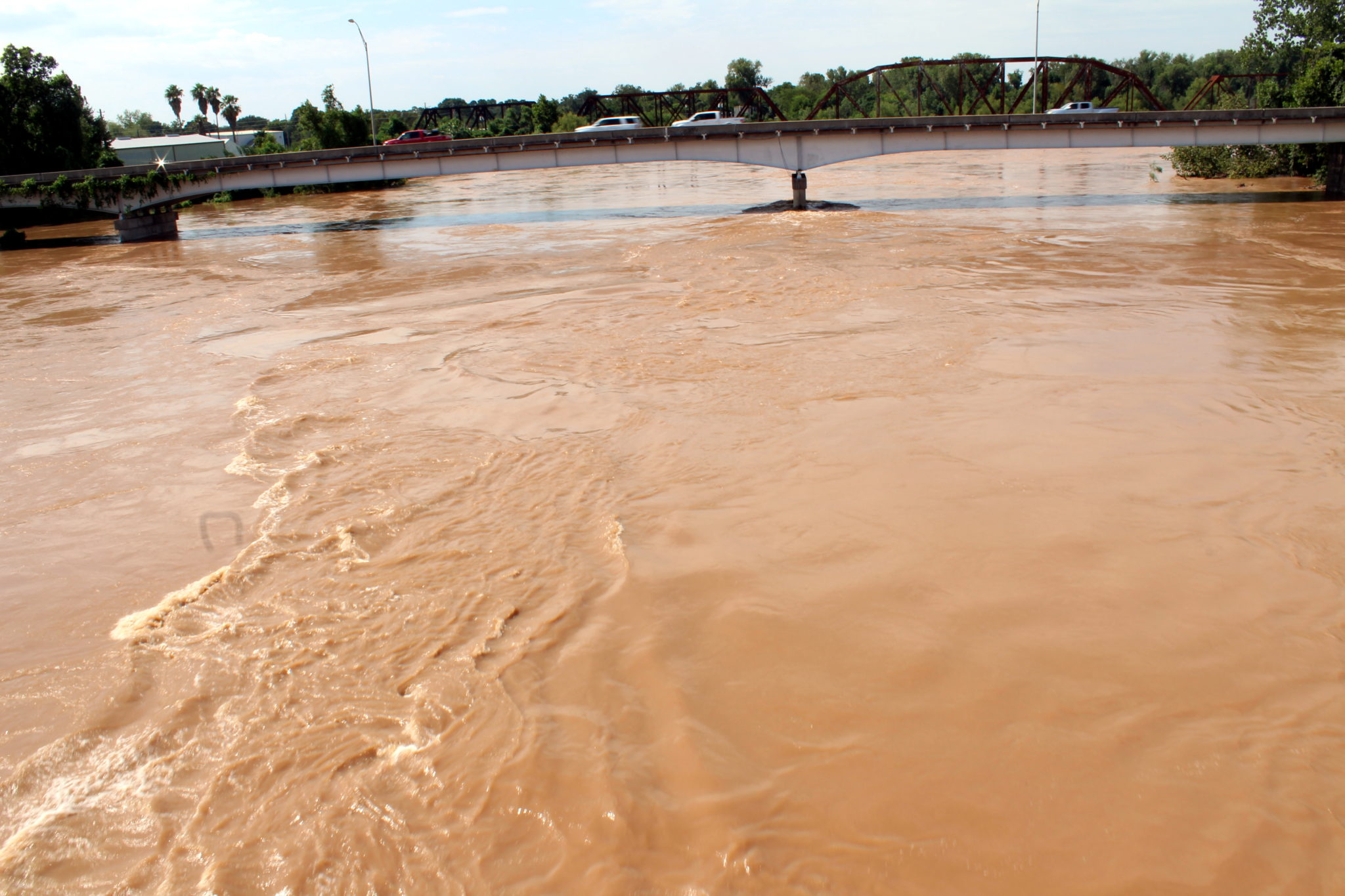
“They built the levee that causes the damages, and they made billions in revenue,” he says. “They dumped water on us.” It’s not clear exactly who “they” is, so I ask: the city, FEMA or another entity? “The government,” Sebesta says.
In 2014, FEMA updated its flood maps, and Riveredge Drive moved from the 100-year floodplain into the floodway — the area of highest risk. Mark Vogler, drainage district manager for Fort Bend County, says that’s not because of any levee construction, but because the river is a moving target. “The Brazos is very difficult to manage,” he says. “The river shifts and erodes, moving miles back and forth over time. That is a natural phenomenon that’s gonna occur.”
Sebesta feels he has no choice but to stay. “I don’t want to live here,” he says. “But I put a lot of money in that house to fix it after the last flood. I can’t just walk away. Either I have to live in it and deal with the floods … or they’re gonna have to buy me out.”
“There’s nobody being pushed out by the city of Richmond,” says City Manager Terri Vela. She says that buyouts aren’t currently an option: “At this point we don’t have any funding for them. I’m not sure if it’s something we’ll be able to do in the future or not.” Vela says she’s been meeting with nonprofits and church groups to discuss options for offering supportive housing to displaced residents.
Meanwhile, Sebesta says he’s talking to neighbors about filing a class-action lawsuit. “If that doesn’t work, I tell you what, there will be a war and it will get nasty,” he says. “We have a right to form a militia and defend ourselves. Have you ever fully read the Second Amendment? Just read up on it. I don’t want to say too much.” Two shotguns lie on a chair nearby. They’ve been there since the week of the flood, when, Sebesta says, he fired warning shots to scare off potential looters.
His tone softens when he talks about his oldest daughter. She’s 17, about to start college at Sam Houston State University. Sebesta didn’t finish high school; his daughter was born when he was 17, and he quit school to take a job as a land surveyor to support his family. “She wants to study criminology,” he says. “She’s a real good kid. I do worry, because that tuition money is kinda critical.” He adds, “I feel bad, complaining about the government like this. I’ve never complained or asked for a handout from anybody. But all this” — he gestures to the muddy riverbank at the end of his backyard — “isn’t right.”
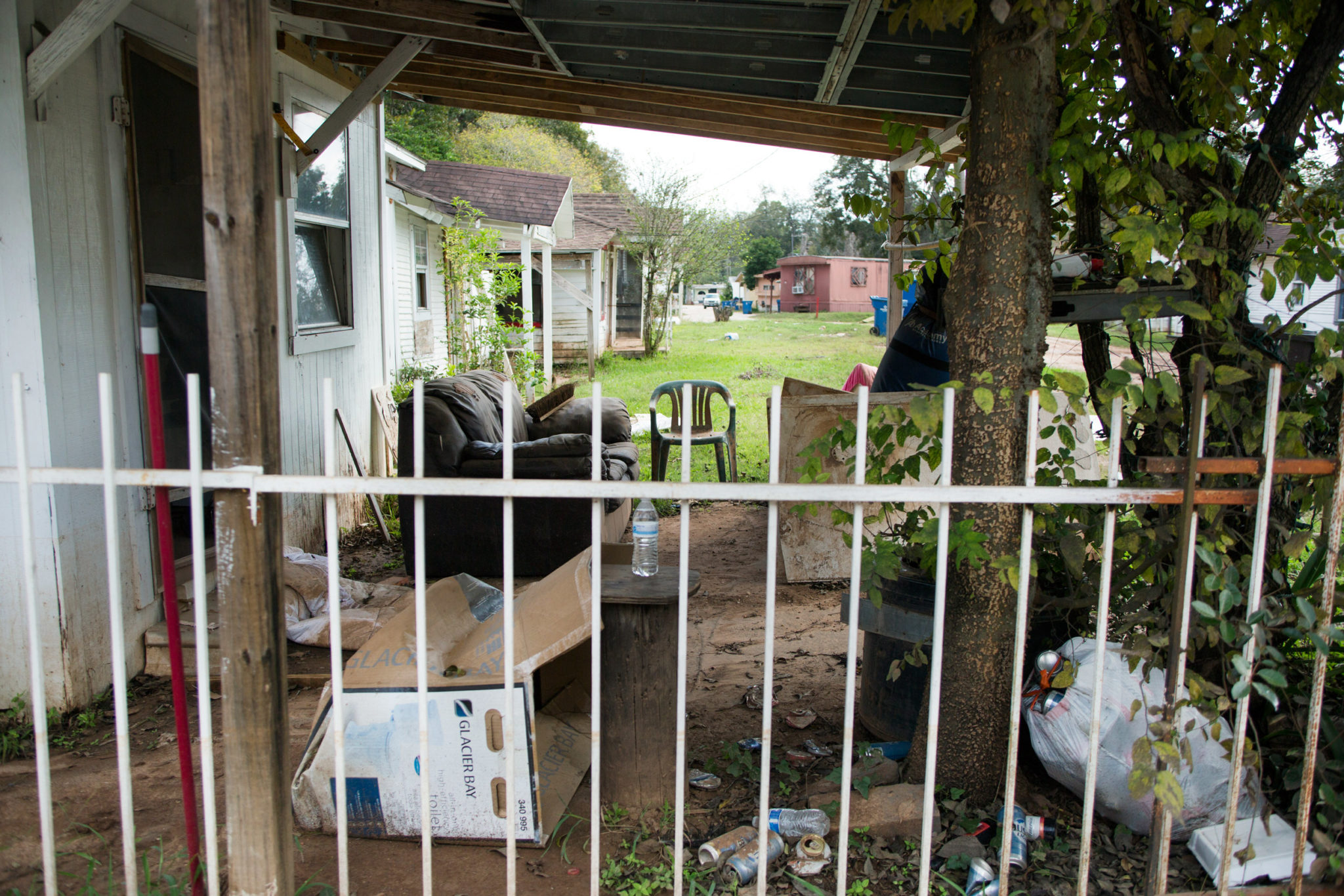
Back at the Reyes’ place, Neo, Maria and Gloria, their 58-year-old daughter, are sitting around a card table in the driveway, drinking bottled water and swatting at the mosquitoes that have been particularly vicious since the flood. They’ve just returned from a long afternoon: first, a doctor’s visit for Neo, who has a bad cough he can’t shake, and then a trip to the city permit office to get permission to begin repairs.
I ask what’s been the most difficult part of their ordeal, and all three answer in unison: “Waiting.” First they waited for the floodwaters to rise, and then they waited for them to recede so they could go in the house and assess the damage. They waited for volunteers to help gut the house and tear out Sheetrock, for contractors to return calls and for paperwork to come in the mail. “We’re still struggling every day,” Maria says. “It’s a lot of work at our age.”
Since 1956, Neo has been recording rainfall totals using a small metal rain gauge outside his barbershop. He still calls the National Weather Service daily to report the numbers. As a result, he has a near-encyclopedic memory of the weather over the years. “We had a flood in 1939, 1957, 1981 and 2016,” he says. “In all my life it never crossed my mind that another one would come a year later.”
The Reyes are grateful that this time, unlike in the first flood, they saved all their belongings. Volunteers from their church helped them move furniture and boxes into storage days before 16 inches of water rushed in. A local auto shop fixed the flood damage in their car for free. “We are blessed by this community,” Maria says.
I ask what’s been the most difficult part of their ordeal, and all three answer in unison: “Waiting.”
But without flood insurance, the cost of making repairs is overwhelming. The house needs new flooring, electrical wiring, plumbing and air conditioning, and they’re not sure how they’ll afford it. They’ve contemplated buying a trailer and moving, but that doesn’t seem doable, either. “It’s not like we can just up and move,” says Gloria. “We don’t have the money. My parents are up in age.”
“We’ve promised people that we can save them or rescue their neighborhoods,” says Rice University flood expert Jim Blackburn. “We’re going to have to recognize that there may be some areas that cannot be rescued. The real rescue for them is buyouts. And that is very, very controversial and very difficult to do.”
Vogler, the drainage district manager, emphasizes that flooding from the Brazos can only be managed, not controlled. “We can’t control Mother Nature,” he says. “It doesn’t matter who you are or what your social status is. … The water doesn’t know the difference.”
Neo says he inherited this land from his father and raised three kids here. Every day for 51 years, he’s walked up the hill to work at his barbershop. This stretch of the Brazos is where he took the kids’ Cub Scout troop camping, where they cooked hot dogs in tin foil and caught catfish from their boat. Maria taught her grandkids how to make tortillas in the kitchen of the home she and her husband built themselves. Even if they had the money, they can’t imagine leaving. “I guess I’m just like that pecan tree over there,” Neo says, nodding toward a tall tree overlooking the river. “My roots are too deep.”

